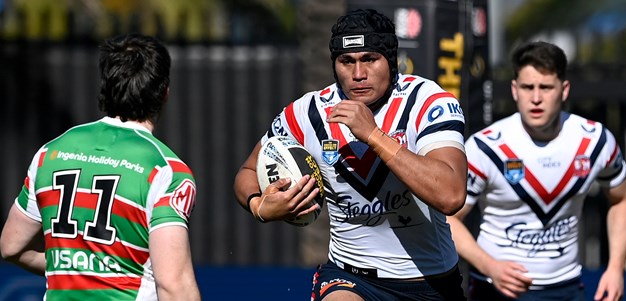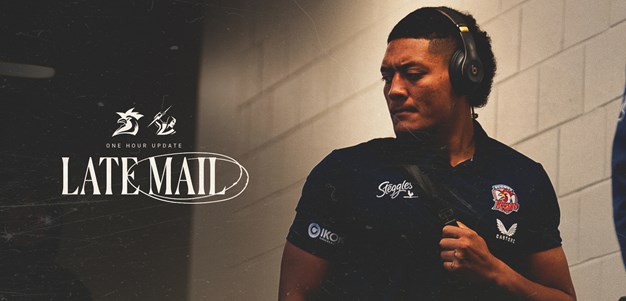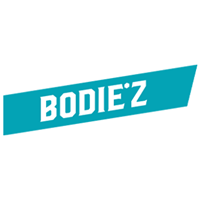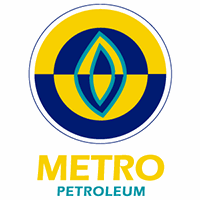Life-long Sydney Roosters fan Alan Katzmann has joined the Roosters.com.au team for the 2013 season and will contribute regular opinion pieces on subjects of interest to our supporters, and league followers in general.
A 12-year Member and Eastern Suburbs local, Alan is one of the tricolours most passionate followers and a proud member of the recently established Jack Gibson Club.
The 14th rugby league World Cup will be conducted in October/November this year, and is to be hosted by England and Wales, with matches also played in Ireland and France. The final is scheduled for Saturday, 30 November at Old Trafford, Manchester, with semi-finals played the week before at Wembley Stadium in London. It promises to be the biggest and best World Cup ever staged, with 14 teams participating and 28 matches played. Each squad will be made up of 24 players.
A record number of players currently contracted to the Roosters (and at least one player who is joining our club) will participate in the tournament, and as we analyse the groupings and teams participating, I will endeavour to identify those from the Roosters that you should be following during the five weeks.
Under World Cup rules, players can change their allegiance to another country if they were born in that country or they have a parent or grandparent who was born in that country. Several players are likely to wait for the selection of the Australian or New Zealand squads before seeking permission to do just this. Players can only change allegiances once in a World Cup cycle, so those who miss selection for Australia or New Zealand that are eligible for another nation will get that opportunity before the other nations choose their squads. Rooster players Michael Jennings (Australia/Tonga), Frank Paul Nuuausala (New Zealand/Samoa), Roger Tuivasa-Sheck (New Zealand/Samoa) and Sam Moa (Tonga/New Zealand) are four players who are likely to make such a change if not chosen for Australia or New Zealand.
However, Newcastles Akuila Uate (Australia/Fiji) and the Warriors Feleti Mateo (Australia/Tonga) will unfortunately not be able to play for any other nation but Australia as they played for their respective alternate nations in the 2009 Pacific Cup and consequently changed their allegiances to Australia. It allowed Uate to play for both NSW and Australia in 2011 and 2012 but Mateo has failed to gain senior representation for NSW or Australia, and unless they are chosen for Australia, both Uate and Mateo will be spectators at this years cup.
Steve Matai (Samoa) and Konrad Hurrell (Tonga) have not waited for New Zealand selectors and have pledged their allegiances already to their alternate Pacific nation of eligibility.
The tournament will feature four groups. Groups A and B will have four nations each, with the top three from each group going through to the knockout stage, while only the winners of groups C and D (three teams per group) will progress to the quarter-finals. In the group stages, each nation will play each other once, but groups C and D will play an additional intergroup match during the group stage. These matches will be between Scotland and the United States; Tonga and the Cook Islands; and Wales and Italy. This will give all nations three matches in the group stages.
Group A features tournament favourites Australia, 1995 runners-up England as well as Fiji and Ireland. The match between Ireland and Fiji in Rochdale on 28 October is likely to determine third place in the group, with the loser not likely to progress through to the quarter-finals. The winner of Australia and England is expected to top the group and play the group D winner (probably Wales) in the first quarter-final.
Michael Jennings and Boyd Cordner are well in contention for places in the Australian team. With the terrible injury to Justin Hodges, Jennings is in a four-way battle for two centre spots on the tour, with Greg Inglis already guaranteed one centre spot. If Jennings misses out, he will have the option of playing for Tonga. Sam Thaiday, Greg Bird and Luke Lewis will be three of the four second rowers on tour. Before his ankle injury I have little doubt that Cordner was leading the race to grab that fourth spot, but it may now rely on the Roosters going deep into the finals and Cordner being able to get back onto the field for him to secure that berth ahead of Glenn Stewart and Ryan Hoffman.
Australia is likely to send only three inside backs (Cooper Cronk, Jonathon Thurston and Daly Cherry-Evans) to Europe leaving Roosters NSW halves Mitchell Pearce and James Maloney, along with Cronullas Todd Carney, back home unless Cronk, Thurston or Cherry-Evans were not able to take their place in the squad as a result of injury. Jake Friend has had an outstanding season and is now universally regarded as Australias third best hooker. Unfortunately that currently leaves him out of Australias squad unless an injury was to occur to either Cameron Smith or Robbie Farah.
Rooster young gun Kane Evans suffered the exact same injury as Cordner playing for Newtown back in June and is still a few weeks away from returning to the field. If he does get back for either Newtowns last round clash or their first week qualifying final and can string a few games together, Evans is likely to win selection as one of Fijis props. Roosters NYC trainer Steve Driscoll will also be one of Fijis trainers on tour.
Group B features defending champions New Zealand as well as Papua New Guinea, France and Samoa. While New Zealand look certain to top the group and play the group C winner (probably Tonga) in the quarter-final, it is hard to split the remaining three nations who will fight it out for two quarter-final berths.
Several Roosters look likely to feature in Stephen Kearneys final 24-man Kiwi squad. Jared Waerea-Hargreaves looks a certain selection where hell join Jesse Bromwich, Ben Matalino and Sam Kasiano in what looks to be an outstanding four-man prop rotation. Sam Moa is well in contention for one of two back-up prop positions, with incumbent test prop Sam McKendry and former test prop Sam Rapira. Moa has a back-up plan he can play also play for the country of his birth, Tonga, whom he played for earlier this year. Shaun Kenny-Dowall will grab a centre spot while Roger Tuivasa-Sheck, having been 18th man for New Zealand earlier this year, would seem to be well placed for an outside back spot, despite heavy competition. Frank Paul Nuuausala, however, faces even stiffer competition to grab one of two lock spots on tour. Jeremy Smith, Elijah Taylor and Greg Eastwood have been preferred in recent years, with Nuuausala not adding to his nine tests since 2010. Melbournes Tohu Harris, who seems equally at home as a lock or second rower, is also likely to tour, further diminishing Nuuausalas prospects for a spot. If overlooked, Nuuausala looks a certain selection for Samoa. Finally, the player who would likely be the tournaments biggest drawcard and a certain New Zealand selection if available, Sonny Bill Williams, is yet to declare his intentions to tour. New Zealand and rugby league supporters in general are waiting anxiously for news regarding this. If he does go, New Zealand has an undeniable chance to win back to back World Cups and Williams would have the chance to become the first player ever to win World Cups in both league and union.
The French team will feature 2011 French player of the year and new Rooster recruit Remi Casty. A selection in the 2012 Super League dream team, Casty will join the Roosters after the World Cup for the 2014 and 2015 seasons.
We will need to wait for the selection of the New Zealand squad before knowing who is likely to be selected for Samoa. Im expecting Roger Tuivasa-Sheck to make the New Zealand squad, but it is likely that Frank Paul Nuuausala will miss out and take the option to represent Samoa.
Isaac Liu, although New Zealand born and New Zealand eligible, is unlikely to win a spot in the Kiwi squad, particularly given the quality of front row forwards and lock forwards they have available. His father, however, is Samoan, and although he was probably not on Samoas radar when they selected their side for the early season test against Tonga he has since impressed many with his performances for the Roosters, and I would have thought he has done enough to earn a spot in the Samoan squad.
Group C features Scotland, Tonga and Italy. The Rooster Tongan connection is significant and I favour Tonga to win this group.
Tonga, managed by long-term Rooster official and current NYC manager Bob Jones, is certain to include at the very least Daniel Tupou, Samisoni Langi and Nafe Seluni. Michael Jennings and Sam Moa may also play if they fail to win selection for Australia or New Zealand respectively. Michael Oldfield, despite not playing for several weeks due to a severe hamstring injury, is also a very good chance to make the Tonga side. Oldfield is expected back for Newtown before the semi-finals and will then press hard for Tongan selection. Tonga is likely to select seven outside backs, with Daniel Tupou, Mahe Fonua, Konrad Hurrell, Suitonga Likiliki and Michael Oldfield likely to be five of them. Michael Jennings, if unsuccessful in gaining selection for Australia, would obviously be welcomed with open arms by Tonga and would fit nicely in as left centre with Hurrell as right centre alongside Daniel Tupou. Unfortunately for Tonga, their fullback Glen Fisiiahi tore his pectoral muscle in June and is unlikely to recover in time to take his place at the World Cup. Roosters injury rehabilitation coordinator Steph Brennan has been chosen as a Tongan physio for the tournament.
There is a strong Italian Roosters connection too. Italy, who will feature in their first World Cup, won through to the tournament by winning their European qualifying group which also featured Lebanon, Russia and Serbia. Italy will be captained by Rooster skipper and former Australian test star Anthony Minichiello, who will play in his first World Cup. Rooster back row forward Aiden Guerra is another certain starter for Italy.
Group D features Wales, Cook Islands and the United States of America. It is the USAs first cup, having qualified by winning the Atlantic qualifying tournament that also featured Jamaica and South Africa.
This group is whatever you call the opposite of the group of death. If I didnt have the upmost respect for the integrity of all rugby league administrators I might have come to the conclusion that this group was specifically selected to maximise the chances of co-hosts Wales winning the group, and therefore playing in the quarter final set down for Wrexham, the largest town in north Wales.
Wales may well win the group and play the winner of group A in the quarter final, but it is by no means certain. Rooster utility Daniel Mortimer looks a likely selection for Wales where he might partner Ollie Olds in the halves.
Cook Islands are likely to feature two Rooster players. Tinirau Arona, the 2011 Cook Islands player of the year, who is likely to skipper the side, and the highly promising front rower, Dylan Napa.
In summary then, the Roosters player representation at the 2013 World Cup may look a little like this:
GROUP A
Australia:
England:
Fiji: Kane Evans
Ireland:
GROUP B
New Zealand: Jared Waerea-Hargreaves, Shaun Kenny-Dowall, Roger Tuivasa-Sheck, Sam Moa, Sonny Bill Williams (hopefully)
Papua New Guinea:
France: Remi Casty
Samoa: Frank Paul Nuuausala, Isaac Liu
GROUP C
Scotland:
Tonga: Daniel Tupou, Samisoni Langi, Nafe Seluini, Michael Oldfield
Italy: Anthony Minichiello, Aidan Guerra
GROUP D
Wales: Daniel Mortimer
Cook Islands: Tinirau Arona, Dylan Napa
USA:
For what its worth I think the top half of the draw will feature quarter-finals between Australia (group A winners) against Wales (group D winners); and Samoa (group B runners-up) against Fiji (group C third place getter). In the bottom half of the draw we may have quarter finals between England (group A runners-up) and France (group B third place getter); and New Zealand (group B winners) against Tonga (group C winners).
Personally, I cant wait for the tournament and I will be watching all 28 games. With 15-20 Rooster players likely to play, the tournament holds great interest for all Rooster fans with a vast majority of matches featuring Rooster players.
The one downside, of course, in having so many of our players at the World Cup is the effect it will have on our preparations for the 2014 season. Less than half of our NRL squad is likely to train with the club prior to the New Year as a result. Given the Roosters will probably have at least double the representation of any NRL or Super League club, the World Cup will adversely affect the Roosters off season far more than any other club.
However, none of us would wish to deny our players the opportunity to play in a rugby league World Cup. The tournament itself is of vital importance to the game, and the games best interests should always trump the interests of individual clubs, even a club as dear to our hearts as the Roosters.
So strap yourselves in, and whatever nation you support give a special cheer for all those Rooster players who are about to embark on a journey of a lifetime. We wish them all well.
NB: The views expressed in this article do not necessarily represent the views of Roosters.com.au, the Sydney Roosters and its board of Directors or staff.
A 12-year Member and Eastern Suburbs local, Alan is one of the tricolours most passionate followers and a proud member of the recently established Jack Gibson Club.
The 14th rugby league World Cup will be conducted in October/November this year, and is to be hosted by England and Wales, with matches also played in Ireland and France. The final is scheduled for Saturday, 30 November at Old Trafford, Manchester, with semi-finals played the week before at Wembley Stadium in London. It promises to be the biggest and best World Cup ever staged, with 14 teams participating and 28 matches played. Each squad will be made up of 24 players.
A record number of players currently contracted to the Roosters (and at least one player who is joining our club) will participate in the tournament, and as we analyse the groupings and teams participating, I will endeavour to identify those from the Roosters that you should be following during the five weeks.
Under World Cup rules, players can change their allegiance to another country if they were born in that country or they have a parent or grandparent who was born in that country. Several players are likely to wait for the selection of the Australian or New Zealand squads before seeking permission to do just this. Players can only change allegiances once in a World Cup cycle, so those who miss selection for Australia or New Zealand that are eligible for another nation will get that opportunity before the other nations choose their squads. Rooster players Michael Jennings (Australia/Tonga), Frank Paul Nuuausala (New Zealand/Samoa), Roger Tuivasa-Sheck (New Zealand/Samoa) and Sam Moa (Tonga/New Zealand) are four players who are likely to make such a change if not chosen for Australia or New Zealand.
However, Newcastles Akuila Uate (Australia/Fiji) and the Warriors Feleti Mateo (Australia/Tonga) will unfortunately not be able to play for any other nation but Australia as they played for their respective alternate nations in the 2009 Pacific Cup and consequently changed their allegiances to Australia. It allowed Uate to play for both NSW and Australia in 2011 and 2012 but Mateo has failed to gain senior representation for NSW or Australia, and unless they are chosen for Australia, both Uate and Mateo will be spectators at this years cup.
Steve Matai (Samoa) and Konrad Hurrell (Tonga) have not waited for New Zealand selectors and have pledged their allegiances already to their alternate Pacific nation of eligibility.
The tournament will feature four groups. Groups A and B will have four nations each, with the top three from each group going through to the knockout stage, while only the winners of groups C and D (three teams per group) will progress to the quarter-finals. In the group stages, each nation will play each other once, but groups C and D will play an additional intergroup match during the group stage. These matches will be between Scotland and the United States; Tonga and the Cook Islands; and Wales and Italy. This will give all nations three matches in the group stages.
Group A features tournament favourites Australia, 1995 runners-up England as well as Fiji and Ireland. The match between Ireland and Fiji in Rochdale on 28 October is likely to determine third place in the group, with the loser not likely to progress through to the quarter-finals. The winner of Australia and England is expected to top the group and play the group D winner (probably Wales) in the first quarter-final.
Michael Jennings and Boyd Cordner are well in contention for places in the Australian team. With the terrible injury to Justin Hodges, Jennings is in a four-way battle for two centre spots on the tour, with Greg Inglis already guaranteed one centre spot. If Jennings misses out, he will have the option of playing for Tonga. Sam Thaiday, Greg Bird and Luke Lewis will be three of the four second rowers on tour. Before his ankle injury I have little doubt that Cordner was leading the race to grab that fourth spot, but it may now rely on the Roosters going deep into the finals and Cordner being able to get back onto the field for him to secure that berth ahead of Glenn Stewart and Ryan Hoffman.
Australia is likely to send only three inside backs (Cooper Cronk, Jonathon Thurston and Daly Cherry-Evans) to Europe leaving Roosters NSW halves Mitchell Pearce and James Maloney, along with Cronullas Todd Carney, back home unless Cronk, Thurston or Cherry-Evans were not able to take their place in the squad as a result of injury. Jake Friend has had an outstanding season and is now universally regarded as Australias third best hooker. Unfortunately that currently leaves him out of Australias squad unless an injury was to occur to either Cameron Smith or Robbie Farah.
Rooster young gun Kane Evans suffered the exact same injury as Cordner playing for Newtown back in June and is still a few weeks away from returning to the field. If he does get back for either Newtowns last round clash or their first week qualifying final and can string a few games together, Evans is likely to win selection as one of Fijis props. Roosters NYC trainer Steve Driscoll will also be one of Fijis trainers on tour.
Group B features defending champions New Zealand as well as Papua New Guinea, France and Samoa. While New Zealand look certain to top the group and play the group C winner (probably Tonga) in the quarter-final, it is hard to split the remaining three nations who will fight it out for two quarter-final berths.
Several Roosters look likely to feature in Stephen Kearneys final 24-man Kiwi squad. Jared Waerea-Hargreaves looks a certain selection where hell join Jesse Bromwich, Ben Matalino and Sam Kasiano in what looks to be an outstanding four-man prop rotation. Sam Moa is well in contention for one of two back-up prop positions, with incumbent test prop Sam McKendry and former test prop Sam Rapira. Moa has a back-up plan he can play also play for the country of his birth, Tonga, whom he played for earlier this year. Shaun Kenny-Dowall will grab a centre spot while Roger Tuivasa-Sheck, having been 18th man for New Zealand earlier this year, would seem to be well placed for an outside back spot, despite heavy competition. Frank Paul Nuuausala, however, faces even stiffer competition to grab one of two lock spots on tour. Jeremy Smith, Elijah Taylor and Greg Eastwood have been preferred in recent years, with Nuuausala not adding to his nine tests since 2010. Melbournes Tohu Harris, who seems equally at home as a lock or second rower, is also likely to tour, further diminishing Nuuausalas prospects for a spot. If overlooked, Nuuausala looks a certain selection for Samoa. Finally, the player who would likely be the tournaments biggest drawcard and a certain New Zealand selection if available, Sonny Bill Williams, is yet to declare his intentions to tour. New Zealand and rugby league supporters in general are waiting anxiously for news regarding this. If he does go, New Zealand has an undeniable chance to win back to back World Cups and Williams would have the chance to become the first player ever to win World Cups in both league and union.
The French team will feature 2011 French player of the year and new Rooster recruit Remi Casty. A selection in the 2012 Super League dream team, Casty will join the Roosters after the World Cup for the 2014 and 2015 seasons.
We will need to wait for the selection of the New Zealand squad before knowing who is likely to be selected for Samoa. Im expecting Roger Tuivasa-Sheck to make the New Zealand squad, but it is likely that Frank Paul Nuuausala will miss out and take the option to represent Samoa.
Isaac Liu, although New Zealand born and New Zealand eligible, is unlikely to win a spot in the Kiwi squad, particularly given the quality of front row forwards and lock forwards they have available. His father, however, is Samoan, and although he was probably not on Samoas radar when they selected their side for the early season test against Tonga he has since impressed many with his performances for the Roosters, and I would have thought he has done enough to earn a spot in the Samoan squad.
Group C features Scotland, Tonga and Italy. The Rooster Tongan connection is significant and I favour Tonga to win this group.
Tonga, managed by long-term Rooster official and current NYC manager Bob Jones, is certain to include at the very least Daniel Tupou, Samisoni Langi and Nafe Seluni. Michael Jennings and Sam Moa may also play if they fail to win selection for Australia or New Zealand respectively. Michael Oldfield, despite not playing for several weeks due to a severe hamstring injury, is also a very good chance to make the Tonga side. Oldfield is expected back for Newtown before the semi-finals and will then press hard for Tongan selection. Tonga is likely to select seven outside backs, with Daniel Tupou, Mahe Fonua, Konrad Hurrell, Suitonga Likiliki and Michael Oldfield likely to be five of them. Michael Jennings, if unsuccessful in gaining selection for Australia, would obviously be welcomed with open arms by Tonga and would fit nicely in as left centre with Hurrell as right centre alongside Daniel Tupou. Unfortunately for Tonga, their fullback Glen Fisiiahi tore his pectoral muscle in June and is unlikely to recover in time to take his place at the World Cup. Roosters injury rehabilitation coordinator Steph Brennan has been chosen as a Tongan physio for the tournament.
There is a strong Italian Roosters connection too. Italy, who will feature in their first World Cup, won through to the tournament by winning their European qualifying group which also featured Lebanon, Russia and Serbia. Italy will be captained by Rooster skipper and former Australian test star Anthony Minichiello, who will play in his first World Cup. Rooster back row forward Aiden Guerra is another certain starter for Italy.
Group D features Wales, Cook Islands and the United States of America. It is the USAs first cup, having qualified by winning the Atlantic qualifying tournament that also featured Jamaica and South Africa.
This group is whatever you call the opposite of the group of death. If I didnt have the upmost respect for the integrity of all rugby league administrators I might have come to the conclusion that this group was specifically selected to maximise the chances of co-hosts Wales winning the group, and therefore playing in the quarter final set down for Wrexham, the largest town in north Wales.
Wales may well win the group and play the winner of group A in the quarter final, but it is by no means certain. Rooster utility Daniel Mortimer looks a likely selection for Wales where he might partner Ollie Olds in the halves.
Cook Islands are likely to feature two Rooster players. Tinirau Arona, the 2011 Cook Islands player of the year, who is likely to skipper the side, and the highly promising front rower, Dylan Napa.
In summary then, the Roosters player representation at the 2013 World Cup may look a little like this:
GROUP A
Australia:
England:
Fiji: Kane Evans
Ireland:
GROUP B
New Zealand: Jared Waerea-Hargreaves, Shaun Kenny-Dowall, Roger Tuivasa-Sheck, Sam Moa, Sonny Bill Williams (hopefully)
Papua New Guinea:
France: Remi Casty
Samoa: Frank Paul Nuuausala, Isaac Liu
GROUP C
Scotland:
Tonga: Daniel Tupou, Samisoni Langi, Nafe Seluini, Michael Oldfield
Italy: Anthony Minichiello, Aidan Guerra
GROUP D
Wales: Daniel Mortimer
Cook Islands: Tinirau Arona, Dylan Napa
USA:
For what its worth I think the top half of the draw will feature quarter-finals between Australia (group A winners) against Wales (group D winners); and Samoa (group B runners-up) against Fiji (group C third place getter). In the bottom half of the draw we may have quarter finals between England (group A runners-up) and France (group B third place getter); and New Zealand (group B winners) against Tonga (group C winners).
Personally, I cant wait for the tournament and I will be watching all 28 games. With 15-20 Rooster players likely to play, the tournament holds great interest for all Rooster fans with a vast majority of matches featuring Rooster players.
The one downside, of course, in having so many of our players at the World Cup is the effect it will have on our preparations for the 2014 season. Less than half of our NRL squad is likely to train with the club prior to the New Year as a result. Given the Roosters will probably have at least double the representation of any NRL or Super League club, the World Cup will adversely affect the Roosters off season far more than any other club.
However, none of us would wish to deny our players the opportunity to play in a rugby league World Cup. The tournament itself is of vital importance to the game, and the games best interests should always trump the interests of individual clubs, even a club as dear to our hearts as the Roosters.
So strap yourselves in, and whatever nation you support give a special cheer for all those Rooster players who are about to embark on a journey of a lifetime. We wish them all well.
NB: The views expressed in this article do not necessarily represent the views of Roosters.com.au, the Sydney Roosters and its board of Directors or staff.











